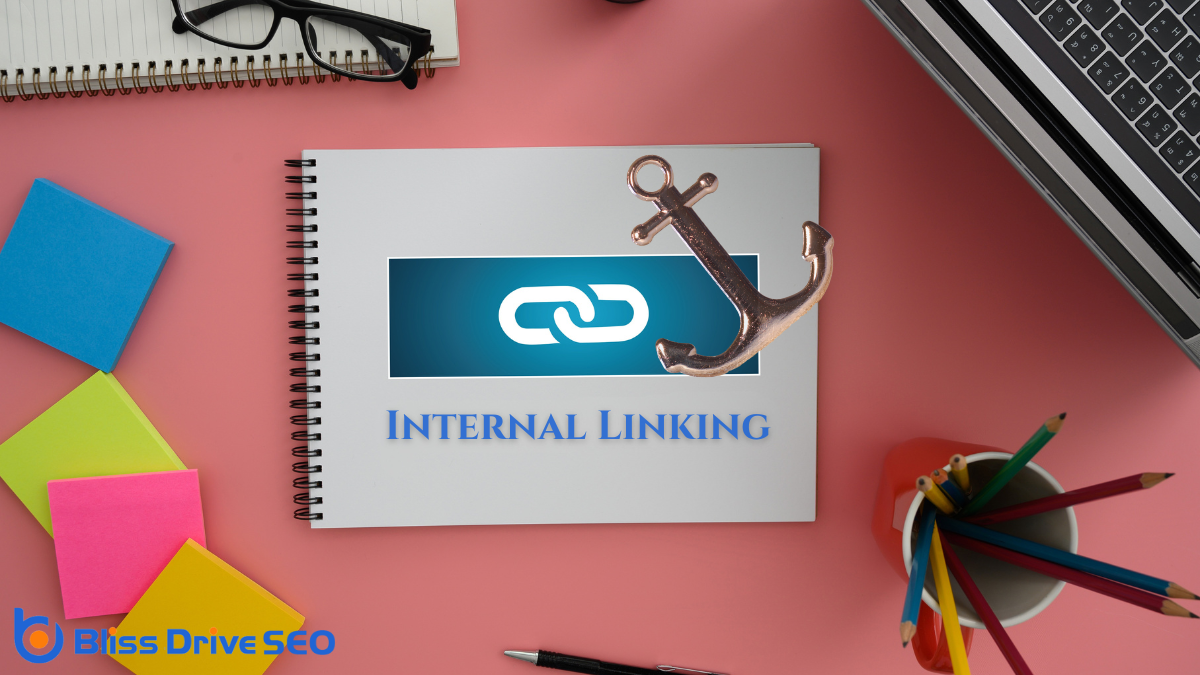Digital Marketing Services
Learn More About Us

Internal links are a key component in shaping the architecture of your website. By strategically placing these links, you create a coherent path for visitors, guiding them through related content effortlessly. They not only enhance user navigation but also help search engines understand your site's structure. This can leadA potential customer referred by an affiliate who has shown interest in the product or service but h... to better SEO performance. Curious about how this interconnected web of links can greatly impact your site's effectiveness? There's more to explore.
When it comes to optimizing your website, understanding the basics of internal linkingLinks that connect different pages on the same website. is essential. Internal links connect different pages within your site, helping search engines and users navigate your content. By linking related pages, you signal to search engines which pages are important, improving your site's visibility in search results.
You'll want to strategically place internal links, using relevant anchor text that clearly describes the linked content. This practice not only enhances the user experience but also aids in distributing page authority effectively across your website.
A well-thought-out internal linking structure can lead users to valuable content they might otherwise miss and encourage them to explore more of your site. Remember, the goal is to create a seamless journey for both users and search engines.

You can make steering your site a breeze for users by strategically placing internal links.
These links streamline content access, allowing visitors to find what they need quickly, which greatly improves their overall experience.
Effective internal linking is essential for streamlining content access on a website. When you strategically place links within your site, you guide visitors directly to the information they seek. This approach minimizes effort and time spent searching, creating a smoother navigation experience.
Internal links connect related topics, making it easier for users to discover content they mightn't have found otherwise. By linking to relevant pages, you increase content visibilityThe extent to which content is discoverable by the target audience. and guarantee users can find what they need without hassle.
It also helps in organizing your site's information hierarchy, allowing visitors to flow naturally from one page to another. Remember, the key is to make navigation intuitive and efficient, so users can quickly access the most pertinent information.
Steering a website should feel like a seamless journey, and internal links play an essential role in enhancing this experience. They guide you effortlessly from one page to another, ensuring you find the information you need quickly. This smooth navigation reduces frustration and keeps you engaged, making the site more enjoyable to explore.
When you encounter internal links, they offerThe specific product or service being promoted by affiliates. context and relevance, connecting related content that might interest you. This connection helps you understand the broader picture, encouraging you to explore deeper into the site.
Moreover, well-placed links create logical pathways, reducing the chance of getting lost. You'll appreciate a site that anticipates your needs, leading to a satisfying experience and likely return visits.
Internal links transform browsing into discovering.
To distribute page authority effectively, you should focus on enhancing link equity flow across your site.
By strategically linking to prioritize important pages, you guarantee they receive the necessary attention and authority.
This approach strengthens SEO signals, helping your site perform better in search engine rankingsThe position at which a website appears in the SERP..
When optimizing your website's internal linking strategy, enhancing link equity flow is essential to distribute page authority effectively. You need to guarantee that authority from high-ranking pages flows seamlessly to other significant pages.
To start, evaluate your site's structure and identify pages with the most authority. Use internal links to guide users and search engines to related content, guaranteeing a natural flow that boosts overall site performance.
Don't overdo it; too many links can dilute authority rather than distribute it. Focus on contextually relevant links that add value to the user experience. This way, you'll enhance your site's architecture, making it easier for search engines to understand and rank your pages.
In the world of internal linking, it's vital to prioritize important pages to distribute page authority effectively. By doing so, you guarantee that your site's significant pages get the visibility they deserve.
Here's how you can achieve that:
While strengthening your site's SEO signals is essential, effectively distributing page authority plays a key role in enhancing your site's overall visibility.
Internal links are vital because they help spread link equity throughout your site, ensuring that each page can contribute to your site's search engine ranking. By strategically linking to important pages, you can direct authority to where it's needed most, boosting their SEO performance.
This approach helps search engines understand the hierarchy and relevance of your pages, making it easier for them to crawl and index your site.
To enhance search engine crawlingThe process by which search engines discover new and updated web pages to index. and indexingThe process of adding web pages into a search engine's database., focus on optimizing your site's internal links and architecture.
By creating a well-structured site, you make it easier for search engines to discover and index your content. Here's how you can improve:

Anchor text is the bridge between your content and effective internal linking. It's the clickable text in a hyperlink, guiding both users and search engines. When you choose descriptive anchor text, you help visitors understand what lies ahead, making navigation intuitive.
For search engines, meaningful anchor text signals what the linked page is about, aiding in better indexing and relevance assessment.
Avoid generic phrases like "click here." Instead, opt for specific keywordsWords or phrases that users type into search engines to find information. that reflect the linked content. This practice enhances user experience and SEO by making your site structure clearer.
You're fundamentally giving search engines clues about the content's context. So, when crafting internal links, think about the words you use. They're small but mighty tools in shaping your site's architecture.
Understanding the power of anchor text sets the stage for developing a logical site structure. You want your site to flow intuitively, guiding users seamlessly through content.
Here are four strategies to achieve that:
Implement these strategies to create a coherent and effective site architecture.
While many focus on external backlinksLinks from other websites pointing to your website, crucial for SEO. for boosting search engine rankings, internal links can greatly impact your site's SEO as well. By strategically placing internal links, you help search engines understand your site's structure and the relationship between content. This, in turn, aids in the distribution of page authority throughout your website.
When you use internal links effectively, you enhance user experience by helping visitors navigate smoothly, reducing bounce rates, and increasing dwell time. These factors signal search engines that your site offers valuable content, potentially improving your rankings.
Internal links also guarantee that search engines index your pages efficiently. By linking to deeper pages, you help them get crawled and indexed, which boosts their visibility.
By focusing on internal links, you'll create a well-organized site that's easy for users to navigate. These links help distribute page authority, improving your SEO performance and making sure search engines can easily crawl and index your content. Use clear anchor text to guide users and search engines alike, and craft a logical site structure to enhance the user experience. Embrace internal linking, and you'll see your site's visibility and engagementThe interactions that users have with a brand’s content on social media. grow.
